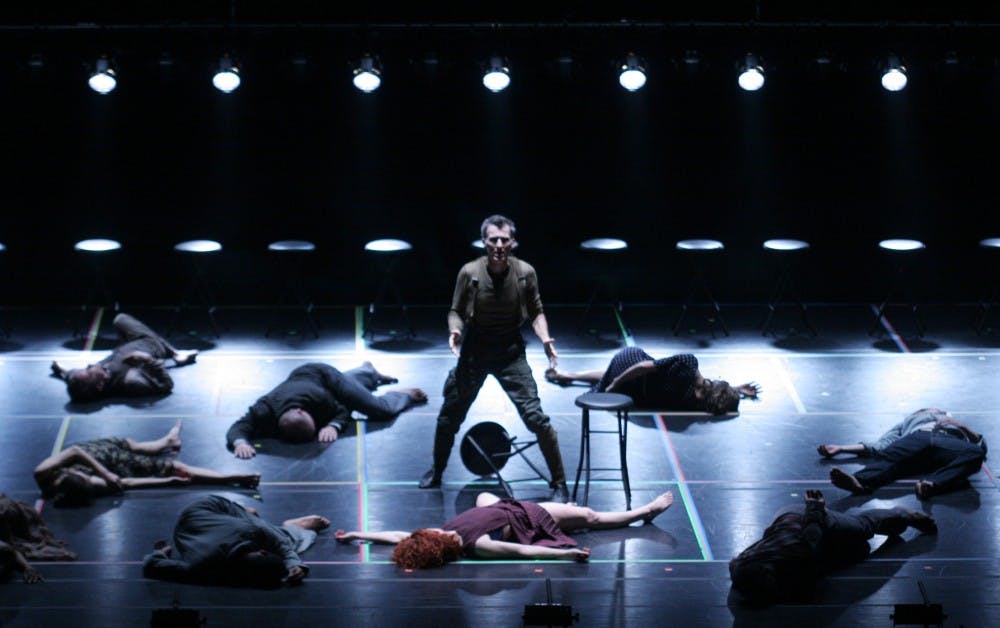As the lights dimmed in Memorial Hall, a line of plain clothes performers marched forth to the edge of the stage.
“A Rite,” a collaborative venture between theater legend Anne Bogart and choreographer Bill T. Jones, held its world premiere Saturday, after weather halted the Friday showing.
Performers who hailed from different companies excelled in both the realms of dance and theater, driving home a narrative that set forth 100 years of narrative surrounding Igor Stravinsky’s historic score of “The Rite of Spring.”
The characterization of the piece was one of the biggest successes of the night.
One of the central characters, played by Ellen Lauren, was based on Severine Neff, a UNC music professor who served as a historical guide for Bogart and Jones.
Another character, a World War I soldier, created the narrative the holds the work together.
The work traces his story of coming home from war and the struggles he faces, culminating in one heart-wrenching and poignant final scene, foreshadowed by his constant muttering of “rat-a-tat-tat” — the sound of a machine gun — throughout the show.
Though this narrative is evocative of the sacrifice “The Rite of Spring” is famous for, the sacrifice of a virginal girl, the theme takes on new meaning and is quickly followed by a rebirth, symbolic of the deconstruction and reconstruction of the original work.
The cast of performers used pauses as freeze frames — sometimes highlighted by spotlights — commenting on the themes of time and metaphysics, reflected also in spoken excerpts from theorist Brian Greene.



